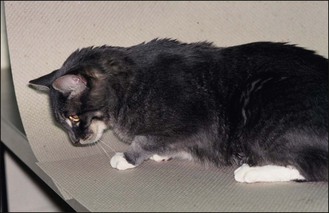60 Ventroflexion of the neck
INTRODUCTION
Cervical ventroflexion occurs in cats but not dogs as a sign of muscle weakness. The cat remains able to see despite the dramatic posture. Other signs such as generalized weakness, resting the head on the ground, and a stiff forelimb gait are noted. Winging of the scapulae in which the dorsal scapulae slightly protrude during weight-bearing is another sign of muscle weakness (Fig. 60.1).
Stay updated, free articles. Join our Telegram channel

Full access? Get Clinical Tree



